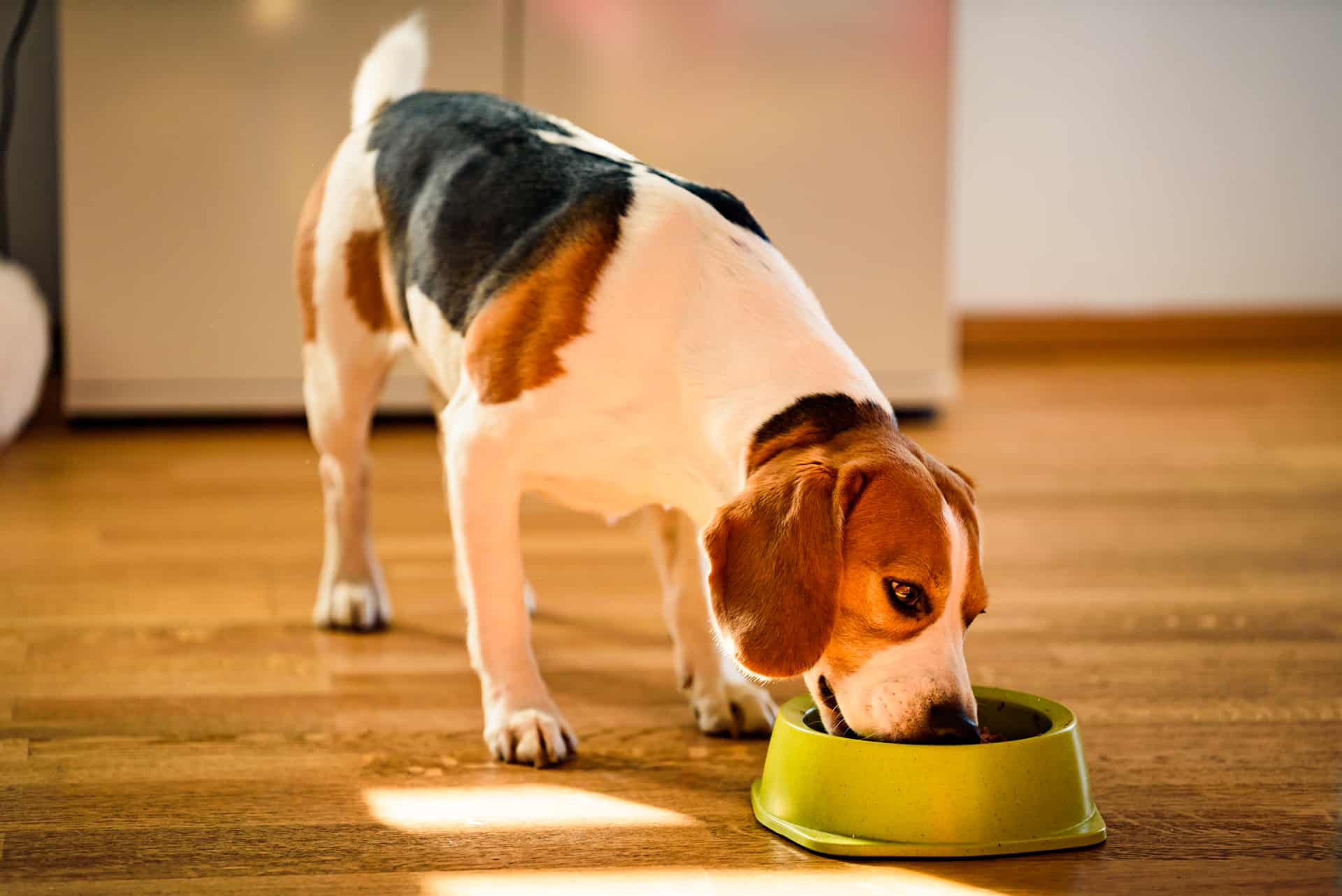What to Look for When Choosing Your Dog’s Food
Choosing the right food for your pup is super important for their health. Here are a few things to keep in mind when selecting the perfect meal for your furry friend:
- High-quality ingredients – Look for proteins like chicken, beef, or fish. Avoid fillers like wheat and corn.
- An AAFCO statement – This shows the food meets nutritional standards. Check the label to be sure!
- Life stage – Puppy, adult, and senior dogs all have different needs. Pick a food that fits your pup’s age.
- Special diets – If your pup has sensitivities, find a food tailored to them.
And don’t forget to chat with your vet before making any changes to your dog’s diet!
Outline-
When picking your pup’s food, there are some key things to keep in mind to make sure they get a healthy and balanced diet. Consider these:
- High-quality protein from sources like chicken, beef, or fish at the top of the ingredient list. Avoid foods with meat by-products or unnamed proteins.
- Healthy fats like chicken fat, fish oil, or flaxseed for energy and coat. Don’t go for unhealthy fats like animal fat or veg oil.
- Whole food carbs like brown rice or sweet potatoes.
- Vitamins and minerals like E, D, and calcium.
- No artificial fillers, preservatives, or colors.
By following these guidelines, you can pick a nutritious and healthy food to keep your pup happy and healthy.
Ingredients to avoid in Dog Food
Choosing your pup’s food? Make sure it’s healthy and nutritionally balanced. But beware of some ingredients. Here’s a list of what to avoid. So you can select the best food for your dog.
Artificial Colors
Many commercial dog foods contain artificial colors which can have a negative effect on your pup’s health. This includes allergies, digestive problems, and hyperactivity.
You should avoid:
- Yellow 5 – Linked to hyperactivity, allergies, and cancer.
- Red 40 – Allergies, behavioral issues, and cancer.
- Blue 2 – Tied to brain tumors and bladder cancer.
For the best nutrition for your dog, look for dog food that does not contain these artificial colors. Instead, opt for natural, whole-food ingredients that will support your pup’s overall health and wellbeing.
Artificial Preservatives
Artificial preservatives in dog food can harm your pup’s health. To avoid these, check the ingredients list for the following:
- BHA/BHT – Linked to cancer and can damage liver & kidneys.
- Ethoxyquin – Primarily used in fish meals and can cause liver & reproductive problems.
- Propylene glycol – Often in moist dog foods, this chemical is also found in antifreeze and can cause anemia & neurological issues.
- TBHQ – Connected to cancer and can cause nausea, vomiting & delirium.
- Sodium nitrate/nitrite – Common in dry dog food and treats, these preservatives can cause digestive issues and even cancer.
Opt for natural preservatives like vitamin E, C and rosemary extract to keep your pup’s food fresh and safe. Always read the label and talk to your vet about the best diet for your dog.
Fillers
Fillers are added to dog food to make it cheaper. But, they can be bad for your pup’s health. So, check the label before you buy a quality food.
Corn is a source of carbs, but it’s a common allergen and has no nutritional value.
Soy is used as a protein source, but it’s an allergen and can cause digestive issues.
Wheat is also a cheap source of carbs, but dogs can have trouble digesting it and it may cause allergies.
Avoid these fillers and choose food with high-quality protein, fat, and other essential nutrients. This will help your pup stay healthy and happy!
Ingredients to look for in Dog Food
Choosing food for your pooch? Must have healthy ingredients! Look for top-notch proteins, veggies and grains. This’ll make sure your pup is getting proper nutrition. What should you look for when selecting food? Here’s the scoop!
Whole Meat and Meat Meals
When shopping for dog food, it’s important to distinguish between whole meat and meat meals. Whole meats are unprocessed, such as chicken, beef, turkey, pork, or lamb. These are a great source of protein, amino acids, and other nutrients. Meat meals have been rendered to create a concentrated protein source. This includes chicken meal, beef meal, and lamb meal. Meat meals are packed with protein and amino acids.
Choose a high-quality protein source like whole meat or meat meal as the main ingredient. Avoid foods with animal by-products or fillers. Every dog has different nutritional needs based on breed, size, and life stage. Ask your vet for personalized feeding recommendations.
Healthy Fats
Search for healthy fats when selecting dog food – they are key! Healthy fats are great for skin and coat health, brain function, and joint health. Here are some healthy fats to look for:
- Omega-3 Fatty Acids – found in fish oil, flaxseed, and chia seeds. They help reduce inflammation, boost brain health, and improve heart performance.
- Omega-6 Fatty Acids – found in animal-based ingredients such as chicken fat and pork fat. They help keep healthy skin and coat, support your pup’s immunity, and promote reproductive health.
- Medium-Chain Triglycerides (MCTs) – found in coconut oil. They give quick energy, help with weight loss, and support brain function.
Check for these ingredients in the top five on the dog food label to make sure your pup is getting enough healthy fats.
Pro Tip: Always check with your vet before changing your pup’s diet.
Fruits and Vegetables
Choosing the right food for your pup is essential. Here are the key ingredients to look for:
- Protein! Dogs need protein for strong muscles. Look for dog food with real meat as the 1st ingredient – beef, chicken, fish.
- Fruits & veggies are a must! They give vitamins, minerals and fiber. Look for sweet potatoes, peas, blueberries, carrots.
- Grain-free? Dogs may have trouble with grains. Look for grain-free options.
- No additives or fillers! Avoid artificial preservatives, corn, and soy.
- Choose quality brands with good reviews. That way, your pup will get the best nutrition.
How to Read Dog Food Labels
In the market, there are lots of options for dog food. Picking the best one can be tricky. It’s important to learn how to read dog food labels so you can make the right choice. This article has the info you need to know about reading pet food labels.
Understanding “complete and balanced” dog food
“Complete and balanced” on a dog food label means it has all the nutrients a pup needs for a healthy body. When picking the right food, focus on the following:
- AAFCO Statement: Check for a statement from the Association of American Feed Control Officials (AAFCO) that the food meets the minimum nutritional requirements.
- Guaranteed Analysis: This shows the percentage of protein, fat, fiber, and moisture in the food. Make sure it meets your pup’s dietary needs.
- Ingredients List: Look for quality protein (like chicken or beef), healthy fats (like fish oil), and whole-food carbs (like rice or sweet potatoes).
- Feeding Directions: Make sure the instructions suit the size and age of your pup.
By looking at these sections, you can make sure you buy a high-quality food that meets your pup’s needs. Pro Tip – Ask your vet what your pup’s specific nutrition needs are.
Guaranteed Analysis (GA)
GA (Guaranteed Analysis) is a group of compulsory nutritional values that pet food producers need to include on their product labels. It gives important information about the nutrients and ingredients in your dog’s food.
How to read and understand GA? Here it is:
- Protein: This number suggests the quantity of protein in the dog food, normally mentioned as a percent.
- Fat: This number expresses the fat content in dog food, usually as a percent, and it’s a major energy source for dogs.
- Fiber: It is essential for a healthy digestion and keeps the gut functioning. It’s expressed as a percent.
- Moisture: It means the water content in the dog food. This is especially important for canned food and it is also expressed as a percent.
- Ash: This number is the non-organic mineral content in the dog food, established by burning it. It is also listed as a percent.
It is very essential to look at the GA on the pet food label to make sure your pet is receiving the nutrients they require for a healthy and joyous life.
Ingredient list order
Reading dog food labels is key. They list ingredients in order of weight, heaviest first. Look for high-quality proteins like chicken, turkey, beef or fish. Avoid fillers like corn, wheat and soy. Whole grains, like brown rice, barley and oats, provide fiber, vitamins and minerals. Fruits and veg, like sweet potatoes, carrots and apples, provide antioxidants and nutrients. Lastly, read the nutritional adequacy statement. It tells if the food meets requirements set by authorities like AAFCO. Pro Tip: Choose food based on quality ingredients. Avoid fillers that give little nutrition.
Types of Dog Food
Choosing the ideal dog food? There are various options! Dry, wet, and raw – all have pros and cons. To pick the best nutrition, understand the types. Here’s a closer peek: market-available dog food!
Dry Food
It’s vital to pick the correct type of dog food for your furry mate. Dry, wet, and semi-moist are the three main types. Let’s concentrate on dry dog food and what to look for when selecting it.
Factors to think about:
- Ingredients: Opt for high-quality protein sources like chicken, beef, or fish. Avoid dog food with fillers, artificial preservatives, and meat by-products.
- Nutritional Value: Check the label for a balanced ratio of protein, fat, and carbohydrates. The food should conform to your dog’s age, breed, and activity level needs.
- Brand Reputation: Select a reliable brand that follows AAFCO guidelines.
- Price: Don’t go for the cheapest. High-quality food saves you from costly vet visits eventually.
Dry dog food is a handy, economic choice with a longer shelf life than other kinds. Pro Tip- Check the expiry date and save the dog food in an airtight container.
Wet Food
Wet food is a type of dog food made of water and meat by-products. It comes in cans or pouches and contains more moisture than dry dog food. When choosing wet dog food, here’s what to look for:
- Ingredients: Look for protein sources like chicken, beef, or fish. Avoid meat by-products, fillers, and artificial preservatives.
- Nutrition: The food should have the right balance of protein, fats, carbs, vitamins and minerals.
- Brand: Pick a reputable brand that follows pet food quality and safety standards.
- Your Dog: Think about your dog’s age, breed, size, and health. Ask your vet for tailored recommendations.
Raw Food
Raw food, also called a raw diet, is a special type of dog food. It’s composed of raw meat, bones, fruits, and vegetables. This sort of food has gained popularity in recent years. Dog owners are searching for alternatives to regular dog foods.
When selecting raw food, search for top-notch meats that don’t have hormones or antibiotics. Balance your pet’s diet to make sure they get essential vitamins, minerals, and nutrients. To help with their health, supplement the raw food diet with omega-3 fatty acids, probiotics, and digestive enzymes.
It’s essential to note that raw food might not be suitable for dogs with weak immune systems. Before making any changes to their diet, consult a vet.
Feeding Your Dog Correctly
Feeding your pup? It’s essential! A good diet can keep them healthy and content. But how to pick the right food? With so many options, it can feel overwhelming. Here’s what to consider when selecting the best food for your dog:
Portion Control
Portions count for your pup’s meals. This is key to keeping your pup healthy and avoiding obesity-related health issues. As an owner, you must be aware of what to look for when picking doggie food. You need to consider:
- Your pup’s age, breed, and activity level.
- The food’s caloric density, nutrient profile, and the inclusion of fillers.
- The feeding schedule and the size of each serving.
You must measure out the right amount of food. This should match your pup’s caloric requirements and be divided up into multiple meals during the day. This helps stop overfeeding and keeps your pup’s energy levels even.
Pro tip: Ask your vet to tell you the ideal portion size for your pup based on their individual needs.
Choosing the right food for your dog’s life stage
Choosing the right food for your pup is key for their health and happiness. Here’s what to consider:
- Age: Puppies need more protein and fat. Older doggos require fewer calories and softer food.
- Size: Smaller dogs need smaller kibble to avoid choking or digestion problems.
- Health condition: Dogs with allergies or diabetes should eat certain food to meet their dietary needs.
- Activity level: Pooches with high activity levels need more protein and calories.
Always read the ingredients list on the dog food package. Look for whole foods without fillers or preservatives. Ask your vet for advice too!
Pro Tip: Get dog food that’s AAFCO certified for the best nutrition for your pup’s life stage.
Balancing your dog’s diet with their lifestyle and activity level.
Feeding your pup right involves balancing their diet with how active they are and their lifestyle, for the best health and energy levels.
Here are some factors to consider when picking their food:
- Age: Puppies need different nosh than adult dogs, and seniors have special dietary needs.
- Breed size: Big and small breeds have different metabolisms and growth rates, so they need certain types and amounts of nutrients.
- Lifestyle: Exercise, activity level, and lifestyle affects their caloric intake and dietary needs.
- Health issues: If your pooch has allergies or a sensitive stomach, you may have to pick a special diet that fits those needs.
Pro Tip: Ask your vet to figure out the best diet for your dog, and make a feeding plan to keep them healthy and happy.
Frequently Asked Questions
Q: What ingredients should I avoid when choosing my dog’s food?
A: Some ingredients to avoid include artificial preservatives, fillers such as corn and wheat, meat by-products, and added sugars.
Q: Should I choose wet or dry food for my dog?
A: Either option can be healthy for your dog, but dry food tends to be more convenient and cost-effective while wet food can be more palatable and help with hydration.
Q: How do I know if a dog food brand is reputable?
A: Look for brands that have been in business for a long time, use high-quality ingredients, and have a good safety record.
Q: How do I determine the right amount of food to feed my dog?
A: Consult with your veterinarian to determine the appropriate portion size based on your dog’s breed, weight, and activity level.
Q: Is it better to choose a dog food that is grain-free?
A: Not necessarily. While some dogs may benefit from a grain-free diet, there is no conclusive evidence that it is healthier overall.







